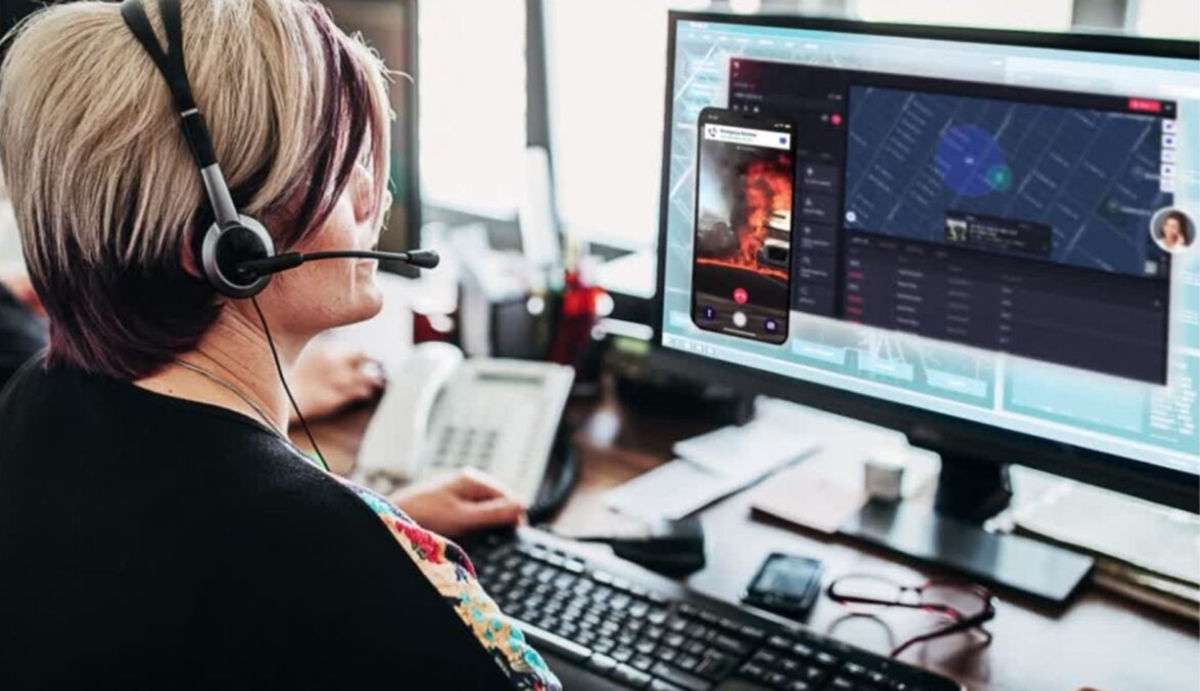
If you zoom into a public safety emergency center station, you will typically face multiple screens with siloed applications that are, at best, loosely coupled. This not only drives rapid public safety staff burnout, but crucial data offered by siloed applications is often missed, since it is not built into the call taker/dispatchers/responder workflow.
As society evolves, so do the expectations surrounding public safety. Citizens now anticipate a more sophisticated and responsive approach from emergency services. The usage of real-time video has emerged as a pivotal tool in transforming emergency response mechanisms. This technological advancement not only enhances operational efficiency but also significantly elevates the capabilities of public safety personnel to better serve communities.
Imagine there’s a car accident. With access to video, the dispatcher can see the scene immediately. They can count the number of cars, check for hazards, and even start first aid instructions. This quick, accurate information saves precious minutes and lives.
At first, the industry was slow to adopt video into their emergency call centers because centers had to buy additional technology that sits on top of the many systems emergency center staff have to learn to use. Today, video is a standard feature in Carbyne’s APEX call handling solution, and it’s becoming more prevalent directly embedded within CAD systems like Tyler Technologies’ Enterprise CAD and protocol systems such as Priority Dispatch’s ProQA system.
Seamlessly Embedding Real-Time Video
The effectiveness of real-time video in public safety hinges on its seamless integration into existing workflows. It’s imperative to embed these video capabilities within specific applications and operational processes for call takers, dispatchers, PROQA users, and responders to maximize their utility and impact.
“In emergency response, the human touch is inherent in every 911 call. Video amplifies our situational awareness, providing a comprehensive view that empowers dispatchers and responders with vital information.” said Duane Kietzman, Senior Manager of Product at Tyler Technologies. Adding, “It’s not about using video every time, but choosing the right moment. Carbyne video integration within Tyler’s Enterprise CAD, aids our dispatchers when and where they need the data, ensuring a more efficient and compassionate response.”
Real-Time Video as an Essential Component
Much like ubiquitous chat functionalities, real-time video should be readily available across various platforms and applications for public safety professionals. Seamless integration ensures optimal use and benefits across the spectrum of tools.
Just as chat features are seamlessly integrated into various platforms and applications, real-time video needs to be readily accessible across the spectrum of public safety tools to ensure its optimal use and benefits. This is much easier today as it is more readily available within the right call handling, CAD, and protocol software.
Integrating real-time video into public safety workflows is not merely a luxury but an indispensable necessity. To meet the evolving expectations of citizens and ensure more effective emergency response, it is imperative that real-time video becomes an intrinsic part of the tools and processes utilized by call takers, dispatchers, and responders.